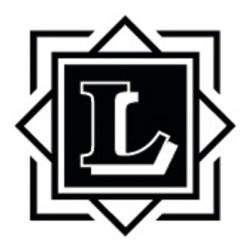Analysis
James Morris (the settlor), a Labour Party councillor and businessman, settled two trusts (the trusts). This claim concerned the validity of the trusts, their rectification, a proprietary estoppel claim by a beneficiary, and the consequences of the trusts’ invalidity.
The first trust concerned Morris Hall, Bellstone Court, Bellstone, Shrewsbury (the hall), which Mr Morris transferred to himself and three others to hold pursuant to a declaration of trust dated 5 April 1934 (the hall trust).
Clause 1(g) of the hall trust provided:
‘After making provision for the funds mentioned [in prior clauses] the remainder of the income or profits arising from the management of the said Hall and premises shall be held by [the trustees] upon trust to make grants of such amounts thereof as they in their uncontrolled discretion may think fit as follows:
(i) To the [first defendant] for parliamentary and municipal elections and for propaganda purposes; and
(ii) to [other Labour Parties in Shropshire] for election purposes […].’
The second trust concerned adjacent offices at 1 Bellstone Court (the offices). The offices were held pursuant to a declaration of trust dated 4 March 1936 (the offices trust) which replicated the trusts and powers of the hall trust.
The trustees of the trusts issued proceedings for declarations as to the validity of the trusts.
The first defendant, an unincorporated association, was the principal beneficiary of the trusts. The first defendant alleged that the trusts were not void; failing that, that they should be rectified; failing that, that it had an interest in the hall by virtue of proprietary estoppel.
Held:
The trusts were formally valid, being declarations of trust in respect of land which complied with s53(1)(b) of the Law of Property Act 1925.
However, the trusts were void for offending the rule against perpetuities. The trusts were settled before 16 July 1964 and the common law rules applied. The perpetuity period was a life or lives in being at the date of creation of the trusts plus 21 years, plus any actual period of gestation. The trusts did not specify a perpetuity period and did not vest the capital in anyone. It was not obvious that the parties to the deeds of trust intended otherwise. An invitation by the first defendant’s counsel to construe the trusts in a manner which was as close as possible to the objective intention of the parties, but which did not offend the rule against perpetuities, departed from the authorities on the construction of trusts.
The trusts were also void for want of a valid object. The trusts were not charitable trusts. They did not have natural beneficiaries. They were ‘category three’ trusts as defined in Neville Estates Ltd v Madden [1962], namely trusts for the purposes of the unincorporated associations that were their beneficiaries. It was a necessary characteristic of a category two trust for the members of the association to be able to alter the purpose of the trust funds or even to apply the funds to the members for their own benefit (Re Grants Will Trusts [1980] followed). The trusts did not directly or indirectly benefit the members of the first defendant in the manner required for the trusts to fall within category two (Re Denley’s Trust Deed [1969] distinguished).
The trusts could not be rectified as there was no evidence of the parties to them having a different intention to the trusts’ objective meaning. Rather, the evidence suggested that the subjective intention of the parties aligned with the trusts’ objective construction. Construing the constitution of a trust to which an unincorporated association was party was a different exercise to construing the constitution of the association itself (GKN Bolts & Nuts (Automotive Division) Sports and Social Club [1982] distinguished).
The proprietary estoppel claim failed. It was ‘highly unusual’ (para 93) as there was no evidence that the members of the first defendant knew of the promise said to arise under clause 1(g) of the declaration of trust or acted to their detriment upon it, and the alleged detriment postdated the promise by some 70 years. Any promise or assurance in clause 1(g) was not to an interest in the hall. The promise or assurance had to be made to persons who acted to their detriment and those persons had not been identified with precision. There could therefore be no reliance on the part of the members of the first defendant, who did not know of clause 1(g), and there was no evidence that the trustees, who did know of the clause, relied upon it.
Having found the trusts to be void, the court had to determine whether anyone had a beneficial interest in the hall and the office, or whether they went bona vacantia to the Crown. Mr Morris had contributed the funds by which the hall was built and the offices purchased and so they were held on resulting trust for the benefit of Mr Morris’ estate.
JUDGMENT HHJ RAWLINGS: Introduction [1] This case concerns the question of whether, what its trustees call the Morris Hall Trust, is void for want of compliance with the rule against perpetuities and/or for not having a permissible object and if the trust is void, whether it can be saved in some way. [2] The claim …
